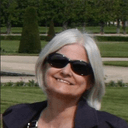Stay in the Loop
BSR publishes on a weekly schedule, with an email newsletter every Wednesday and Thursday morning. There’s no paywall, and subscribing is always free.
Reclaiming creativity through dance
Stepping through time and space with Kun-Yang Lin/Dancers' Where is my B-O-D-Y

For Kun-Yang Lin, artistic director of KYL/D, being an Asian immigrant is fundamental to his dance. “A sense of Chi is very important.” He explained, “Chi is not just related to our breathing, but it relates to how we function with a dancing body, or as a person in the world, in the society, with each other.” But in the midst of the pandemic, he found himself unable to breathe. “I just feared that I was burned out.”
Dance in time and space
A grant from the Pew Center for Arts and Heritage allowed Lin the freedom to rediscover his body in movement: “And then you start to recognize, ah, I can breathe again.” It gave him time to think about the world around him. “We are talking about gender, and race differences, and also immigrants and nonimmigrants—all these contrasts. How do I navigate myself in this world?”
He wanted to share that renewal with fellow veteran dancers Pallabi Chakravorty and Gus Solomons Jr. They all run their own dance companies and teach: Lin at Temple University and Chakravorty chairing the dance department at Swarthmore College. Solomons taught at New York University for 25 years, where Lin was one of his students.
The three dancers bring together all the contrasts that Lin identified: race, gender, and ethnic identity, but their styles seemed an unlikely mix. Chakravorty specializes in Kathak, a dance form that focuses on Tal, the rhythmic beat of the feet. “The training that I have is in Tal structure,” she explained, “or these timing cycles. And so my grid is time, and I always go back to this particular grid, and then we layer it.” By contrast, Lin focuses on movement through space.
Solomons works in the Merce Cunningham school of abstract movement, whereas Chakravorty tells a story in her movement. Her style is embedded in music and she often returns to India for research and to work with musicians composing pieces for her choreography. Solomons does not rely on music, but in spite of their differences, he gave his fellow dancers a bridge between the styles. “When you lose your ‘inspiration,’ it’s because you are usually tired of what you’ve been doing,” he said. “But you don’t know where to look for something different. And when that happens, you go back to basics, which is moving, doing things.”
Solomons started with a series of verbs: “I made a list of things to do without any ulterior motive, and that became our score, essentially. And the way each of us bring our own backgrounds to the doing is the essence of what we’ve made.”
Challenging times
The project allowed them to explore their creativity within the limitations age placed on them. For Chakravorty, injuries meant she could not twirl the way she used to. “It is always in the back of my mind, the freedom that I felt when I used to twirl, like I was flying.” Her journey meant finding a way to express that aesthetic excitement without the speed she used to bring. “How do I deliver that?”
Lin has also had to explore new ways to express himself creatively. “I cannot balance anymore, with my ankles . . . I know if I jump, I probably cannot walk for a whole week!” he said. But as he showed in a recent performance, he can still touch our hearts. Solomons was rehearsing via Zoom from a hospital bed, and says that we may see him dance with his walker. But as Lin pointed out, “The way that he stands, you know the wisdom in his body. You cannot hide it.”
Ultimately, Lin said, the most important thing the trio learned from the project is to trust each other, and in that trust, to allow themselves to be vulnerable and to express that vulnerability. They also relearned joy and laughter along the way.
What, When, Where
Where is my B-O-D-Y, presented by Kun-Yang Lin/Dancers. Tickets are free but reservations are required via email, [email protected]. Saturday, September 25, 2021, at 3pm, CHI Movement Arts Center, 1316 South Ninth Street. Proof of vaccination is required.
Accessibility
CHI Movement Arts Center is wheelchair accessible and ADA-compliant.
Sign up for our newsletter
All of the week's new articles, all in one place. Sign up for the free weekly BSR newsletters, and don't miss a conversation.

 Camille Bacon-Smith
Camille Bacon-Smith